Whether you want to troubleshoot your SSD, replace it, or unplug it, you would like to know where it is located in the first place.
The exact location of an SSD varies from motherboard to motherboard and what kind of SSD you have.
There are two kinds of SSDs, M.2 and SATA SSDs, and depending upon what form factor they conform to, they can either be located on the M.2 slot on the motherboard or in the 2.5″ drive bay in your PC case.
In the following text, I will explain how to identify what SSD you have and then figure out where it can be located on your PC.
TABLE OF CONTENTS
The Two SSD Form Factors
Let’s start with a brief explainer of what kind of SSD form factors there are since a particular SSD form factor can give you an idea about where it can be located.
There are essentially two form factors:
- 2.5″
- M.2
2.5″ SATA SSDs
2.5″ SSDs are large. They have a similar size as the 2.5″ Hard Disk drives found on laptops.
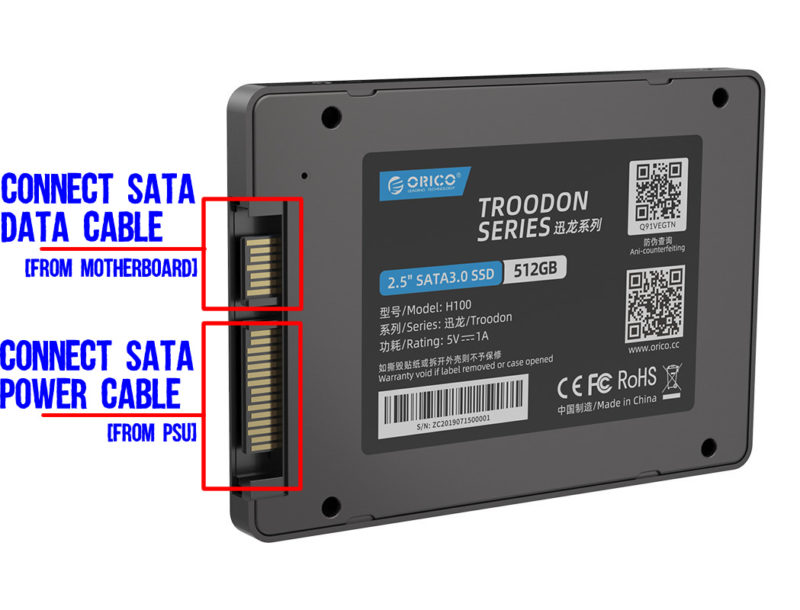
2.5″ SSDs are ALL SATA SSDs. Meaning 2.5″ SSDs use the SATA interface, with a maximum transfer speed of 550 MB/s. This is the slower of the two interfaces for connecting SSDs (the other being the PCIe interface).
2.5″ SSDs are in the PC case’s 2.5″ drive bay. Many PC cases do not specifically have a 2.5″ drive bay and instead have 3.5″ drive bays.
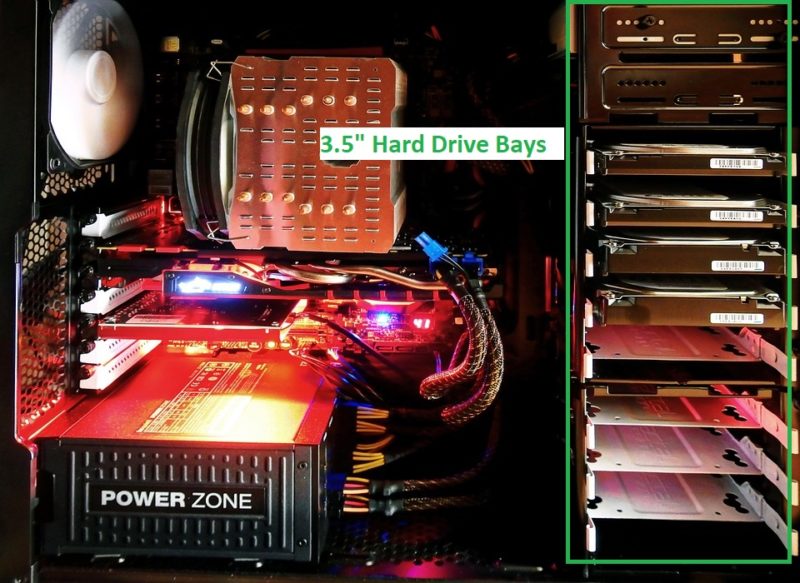
To make 3.5″ drive bays suitable for 2.5″ SSDs, an adapter similar to the following is used:
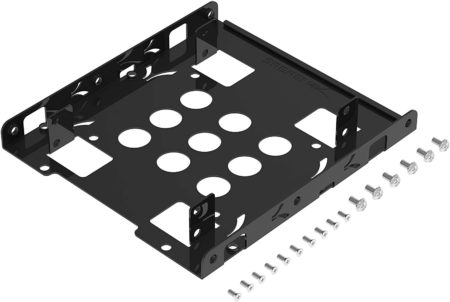
2.5″ SSDs require a SATA power connection and a SATA DATA connection.
The DATA connection for these drives comes from the motherboard. SATA data cables are used. They have one end connected to the motherboard and the other to the SSD.
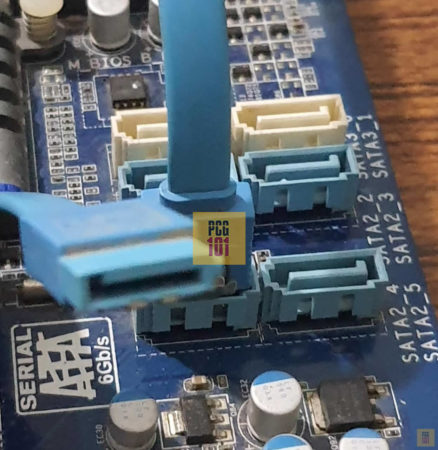
The power connection for the 2.5″ SSDs comes from the power supply unit.
M.2 SSDs
M.2 SSDs are small sticks like SSDs. They are much smaller, ranging from 22mm by 30mm to 22mm by 110mm in dimensions.
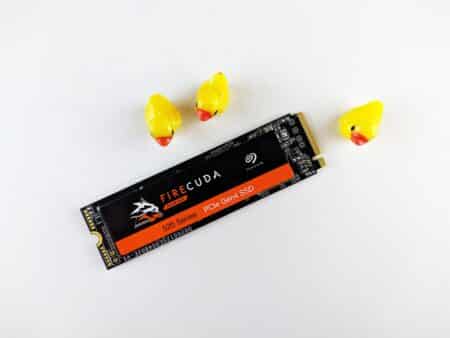
M.2 SSDs plug into the M.2 slot on your motherboard. The exact location of the M.2 slot varies from motherboard to motherboard.
M.2 SSDs can be found using SATA or PCIe NVMe interface. SATA M.2 SSDs cap at 550 MB/s, whereas PCIe NVMe SSDs can reach speeds up to 7000 MB/s!
Figuring Out What SSD You Have on Your PC
To figure out the location of SSDs on your PC, first, find out what SSD you have in the first place.
To figure out what SSD you have, you can use a simple third-party software called CrystalDiskInfo. This is a prevalent software for all things related to hard drives.
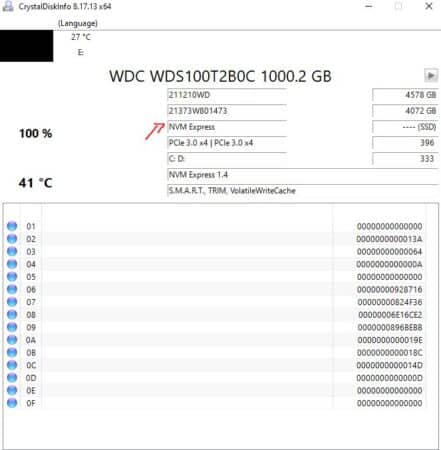
For instance, the information on my SSD is shown on the CrystalDiskInfo.
It shows that the SSD is of PCIe NVMe type. Since PCIe NVMe SSDs conform only to the M.2 form factor, it is most likely located on the motherboard instead of the drive bays.
You can also tell what type of SSD you have through its model number (WDC WDS100T2B0C). You can look up the model number of your SSD on Google to figure out whether it is an M.2 SSD or a SATA SSD.
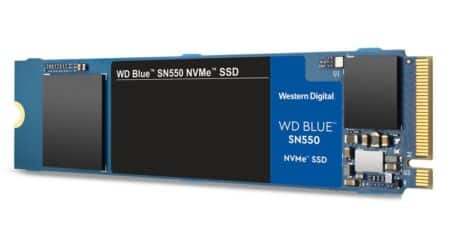
In addition, if you have several hard drives /drives/partitions PC but need help figuring out which cell belongs to the SSD and which does not, this software can help again.
In the CrystalDiskInfo image above, you can see that this drive shares two partitions, i.e., C: and D:
What Does an M.2 Slot Look Like?
If you have never seen an M.2 slot before, then it would help to know what it looks like to figure out where your M.2 SSDs are located.

The image above shows a typical M.2 slot on a motherboard.
The slot has several holes at different intervals for different sizes of the M.2 SSDs.
The M.2 slots are often located at the bottom half of a motherboard.
Motherboards can have multiple M.2 SSD slots. For instance, the ASUS Prime B660-Plus D4 motherboard?ASUS Prime B660-Plus D4 motherboard. This motherboard has 3 x M.2 slots.
You can determine their exact location through physical inspection or the provided manual.
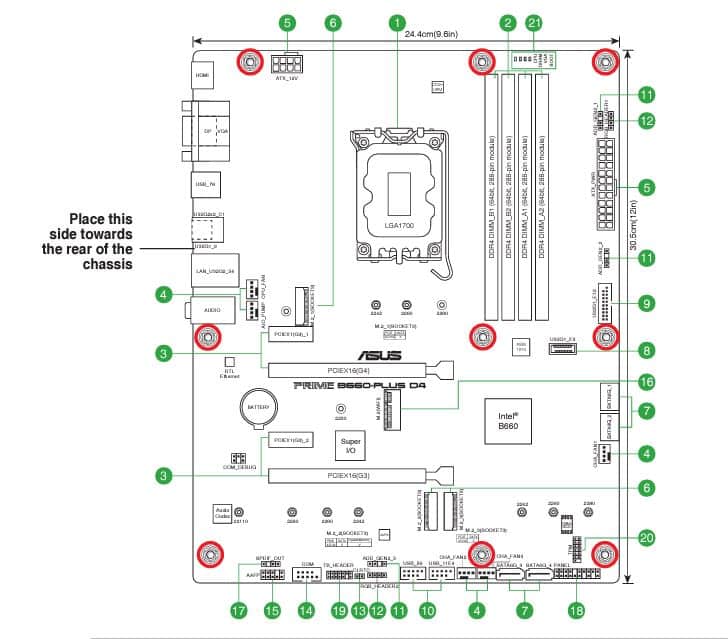
You can see from the motherboard layout above that label number 6 identifies all the M.2 slots on this motherboard. If you have an M.2 SSD, it could be in one of these slots.
Where is SSD listed on your PC?
So as discussed above, SSDs can be found in two locations GENERALLY:
- 2.5″ drive bays on your PC case for 2.5″ SATA SSDs
- M.2 Slots on the motherboard for M.2 SATA and M.2 PCIe NVMe SSDs
In some cases, it could take further digging to figure out where your SSDs are located:
1. Under the Heatsinks
M.2 SSDs on certain motherboards can be found underneath unique heatsinks. These heatsinks are designed to lower the operating temperature of the SSDs and thus further boost their performance.
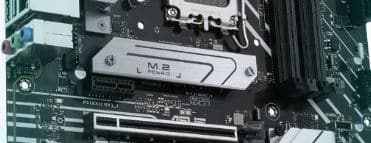
To access the M.2 SSDs under the heatsinks, you must remove the screws on top.
2. In M.2 Expansion Cards
In some cases, M.2 SSDs can be found on unique expansion cards that go into the PCIe slots.
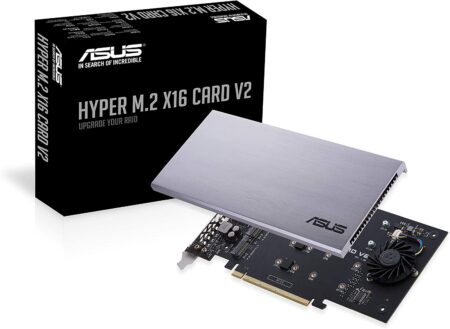
Like the one above, M.2 SSD expansion cards are used when you do not have an M.2 slot on your motherboard or want to install additional SSDs.
To access SSDs in these M.2 expansion cards, you may need to remove their top cover, which also acts as a heatsink.
Final Words
There is no precise answer to the “Where is SSD located” question. The location depends upon factors such as what type of SSD you have and where the drive-bays or the M.2 slots are on your PC.
Generally, though, once you have a clear idea about what different types of SSDs and their slots look like, you can quickly figure out their location.
Frequently Asked Questions
1. Can I install an SSD in my PC if I don’t have an M.2 slot?
Yes, you can still install an SSD in your PC using a SATA connection, which is compatible with traditional 2.5-inch SSDs.
2. Can I use an SSD as a boot drive?
Yes, using an SSD as a boot drive can significantly improve your computer’s boot time and overall performance.
3. Can I have both an SSD and an HDD in my PC?
Yes, many desktop computers have both an SSD and an HDD. This allows you to store your operating system and frequently used programs on the SSD for fast performance, while using the HDD for larger files and storage.
4. How do I find out if my PC has an SSD?
You can check if your PC has an SSD by going to the Device Manager in Windows and looking for an entry labeled “Solid State Drives” or “Disk Drives.” You can also check your PC’s specifications online or in the manual that came with your computer.
